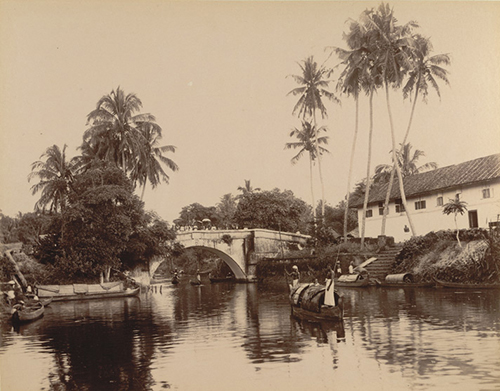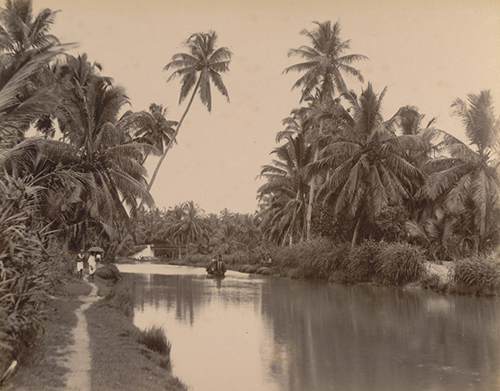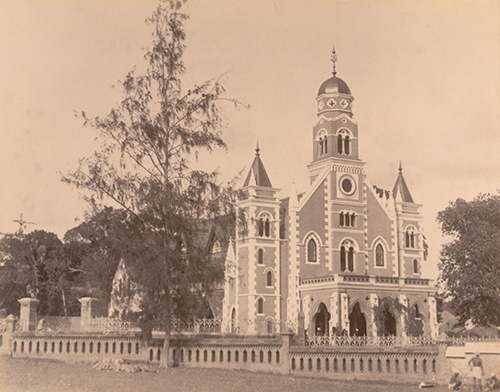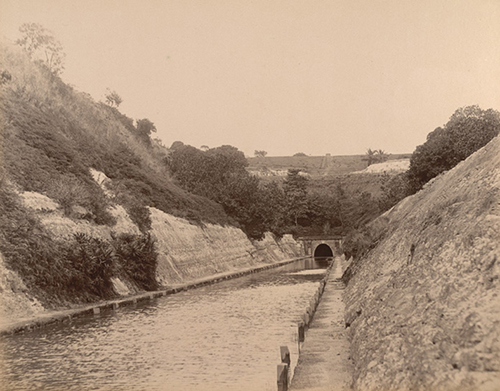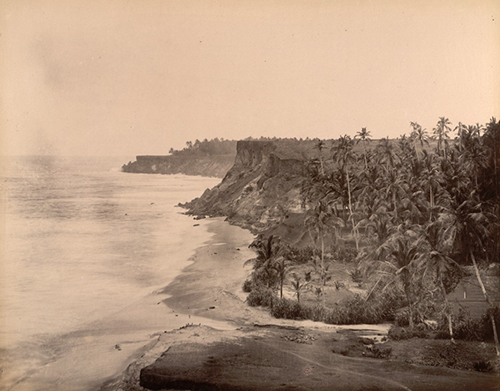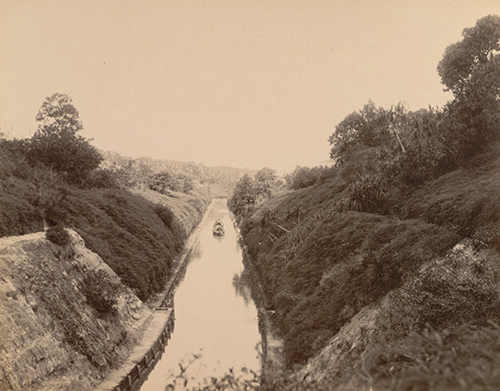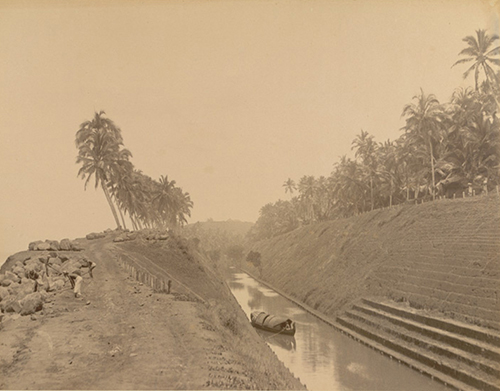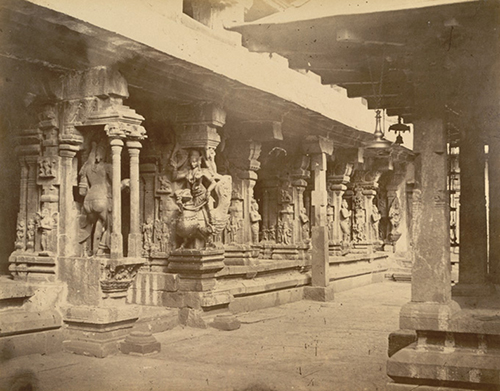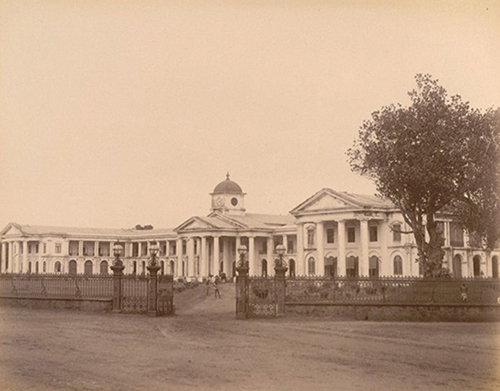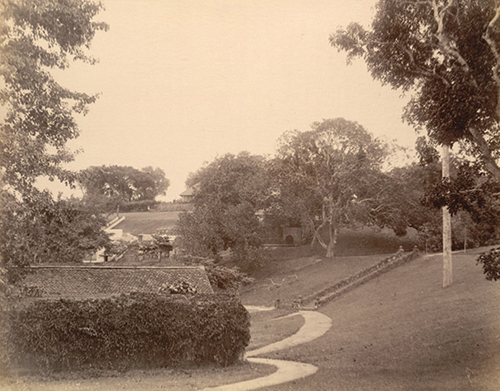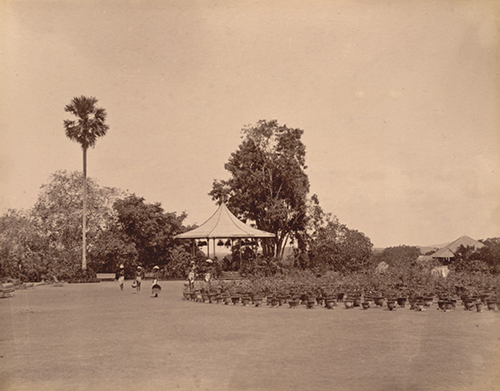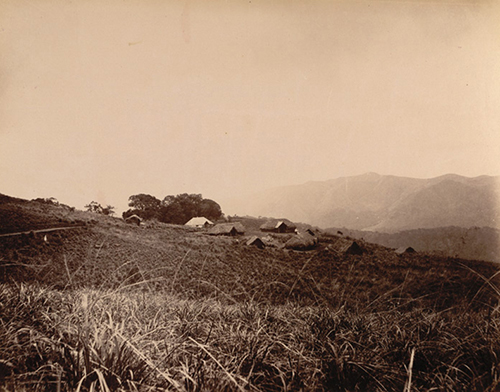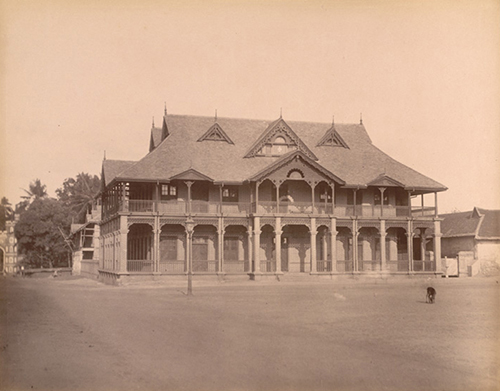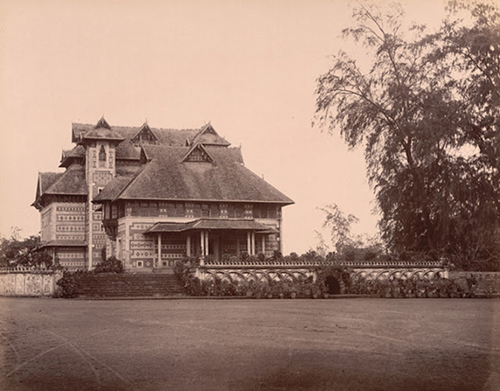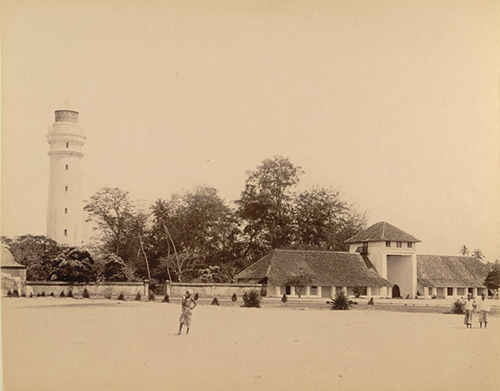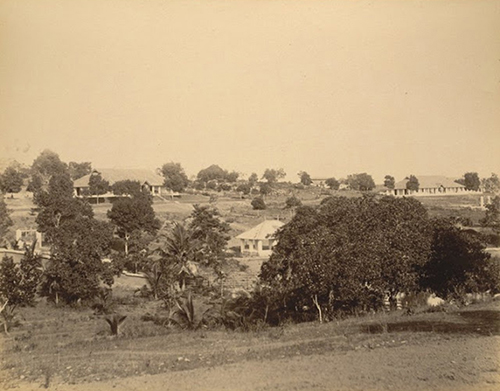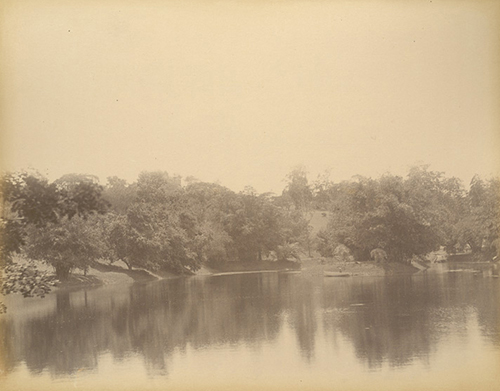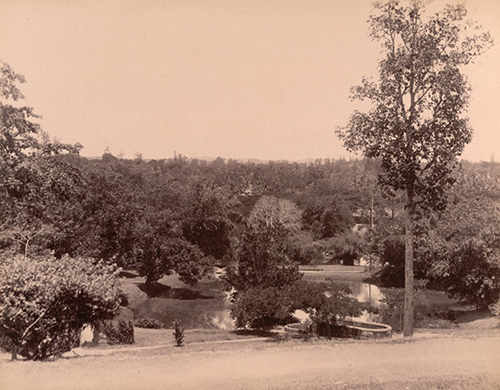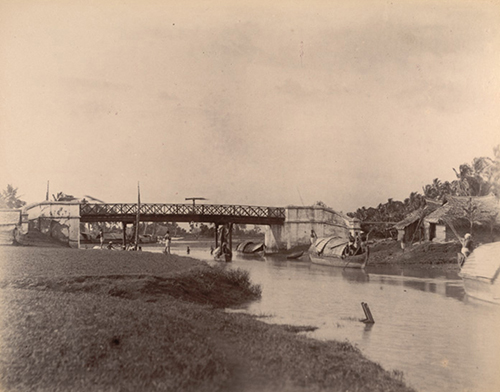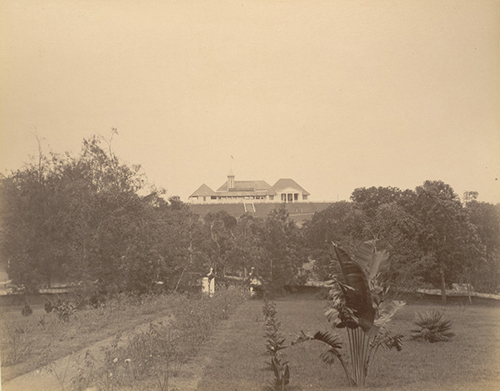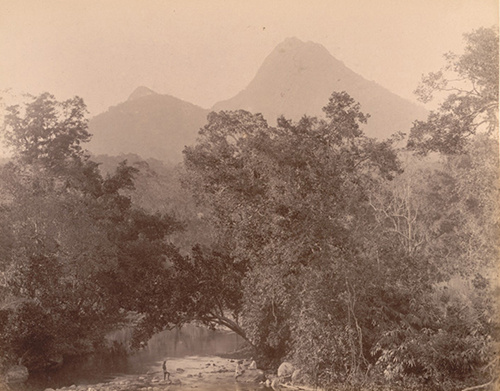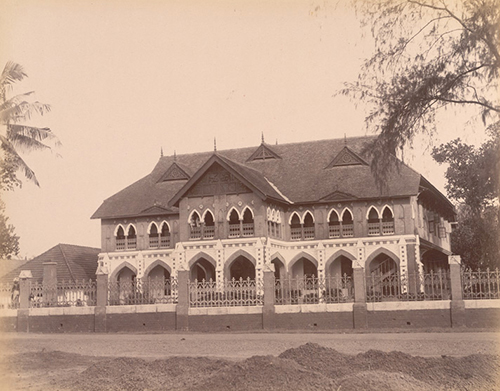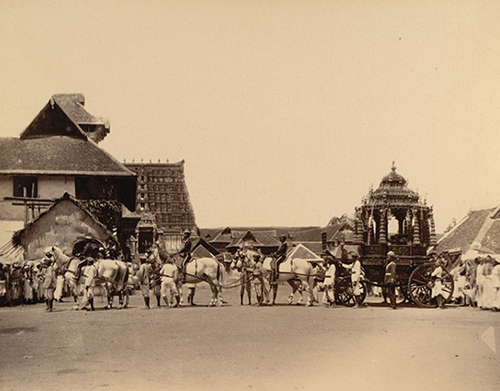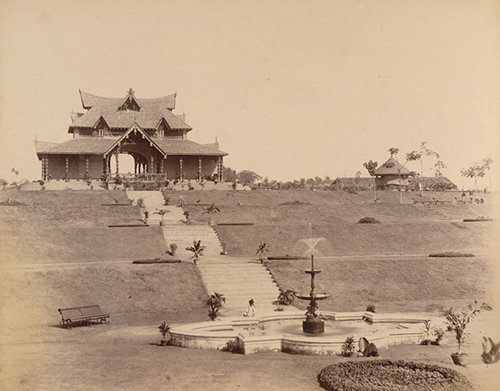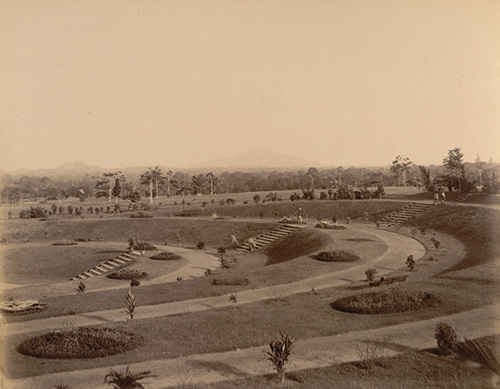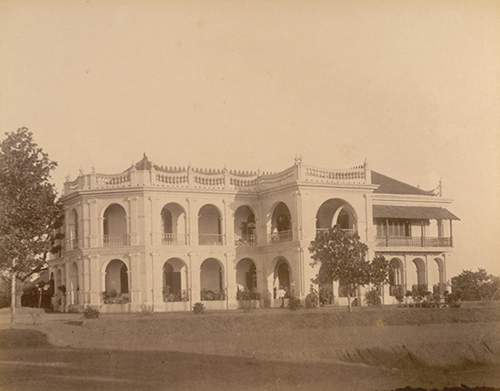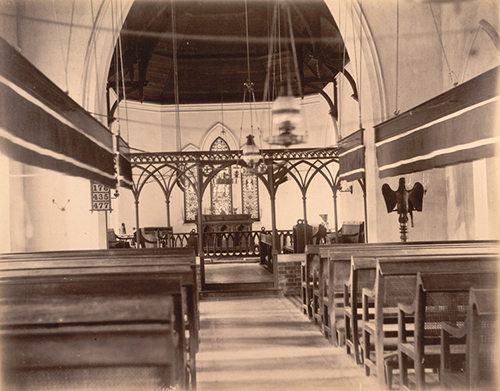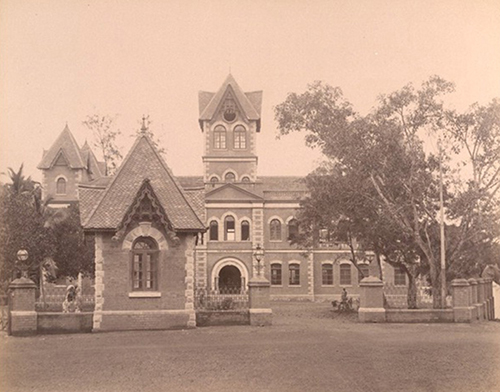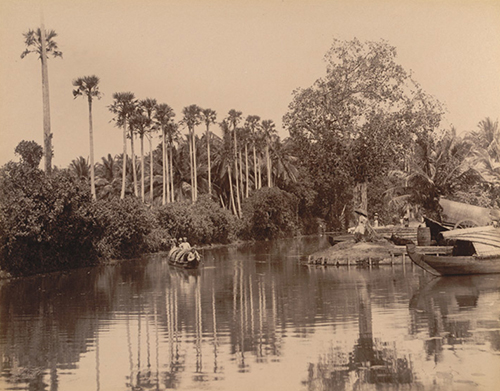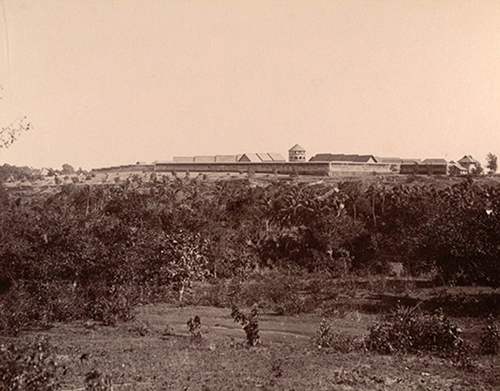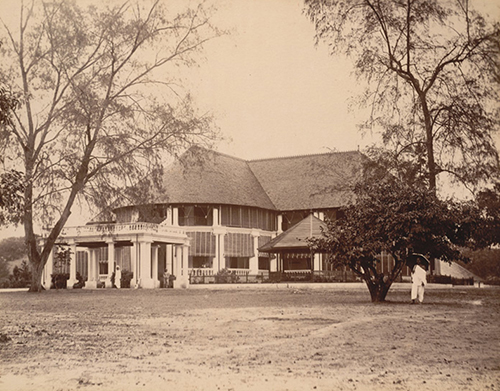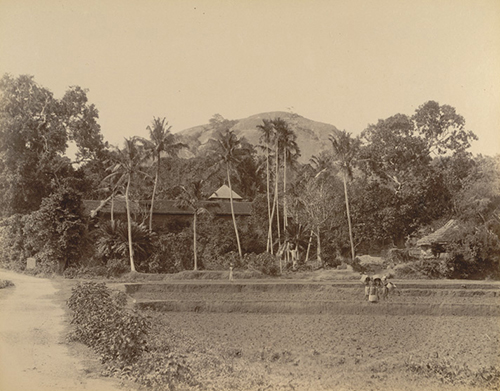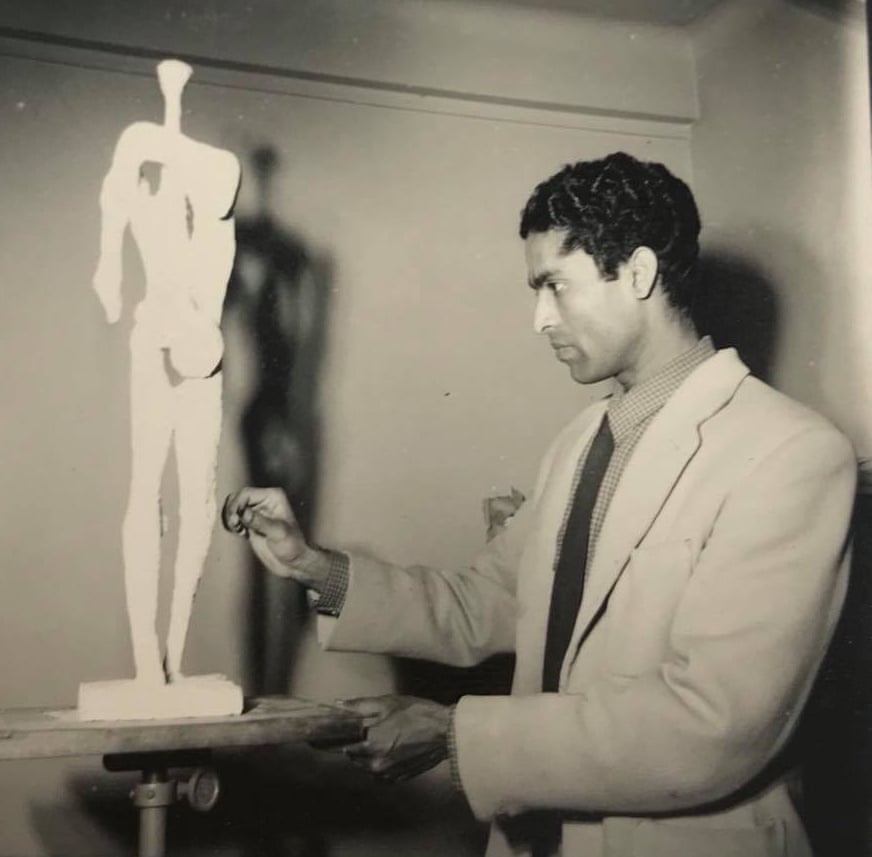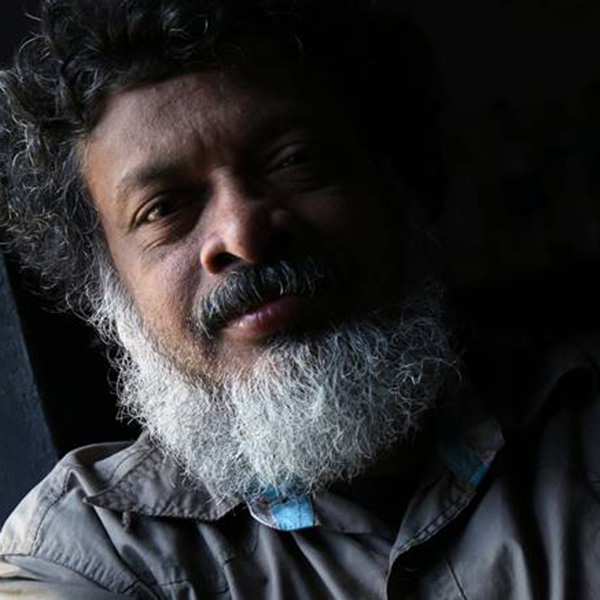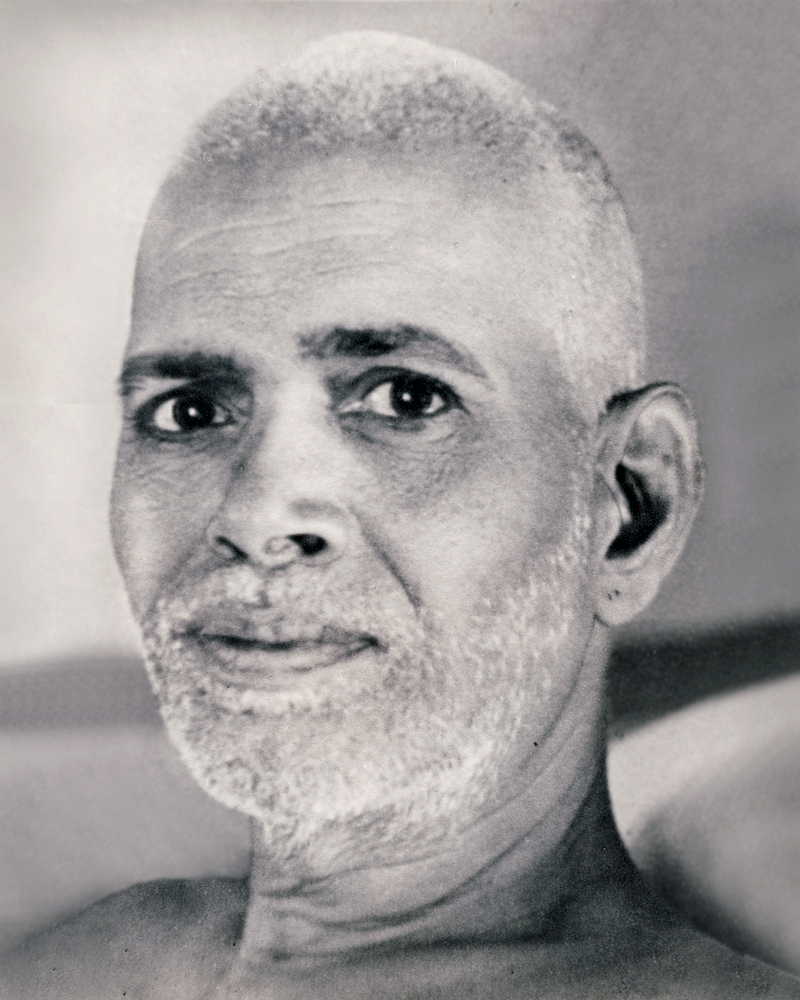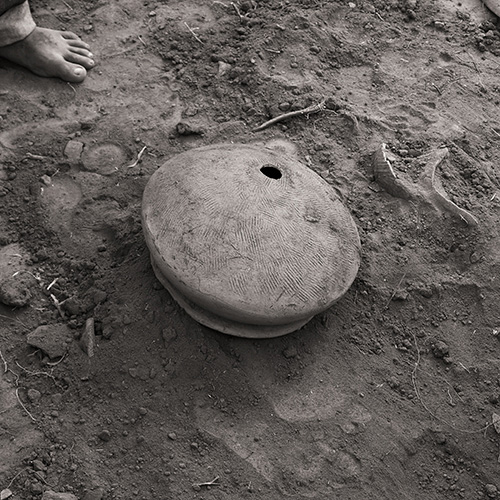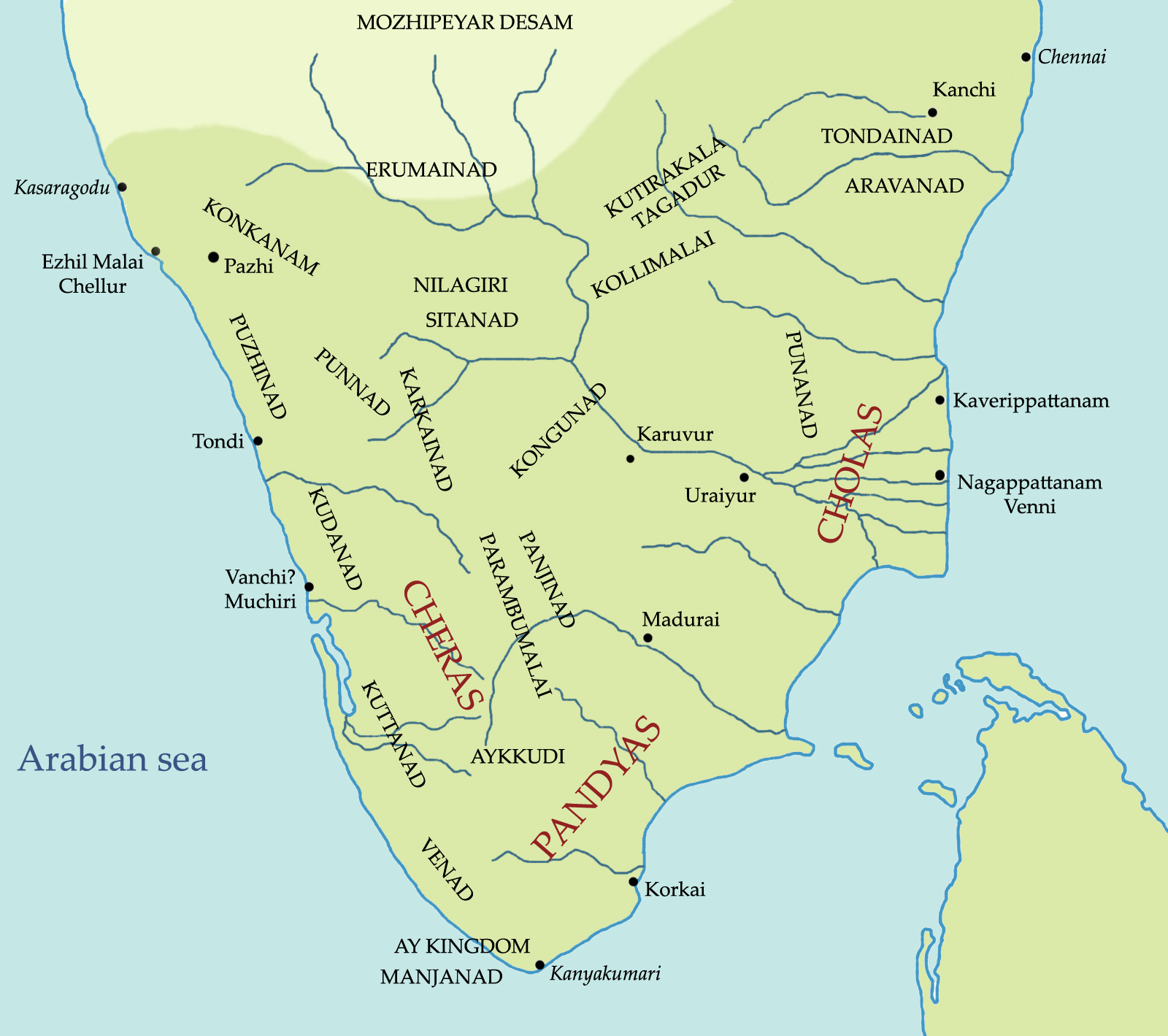Memory
History
Photo Mail remembers
Photographers and
Their contribution
As well as tunes into
The historical perspectives that
Influence contemporary
Photographic practice and
Its aesthetics
Photography © Zacharia D’Cruz
Zachariah D’Cruz is not an oft-mentioned name in the context of Indian photography, and his images circulate in India, especially Kerala, without his name being mentioned as the author. It is easiest to describe him as a government photographer of the Travancore kingdom, whose most popular and most visible work today consists of a collection of 76 images titled “Album of South Indian Views”, which was gifted to Lord Curzon1 on his visit to Travancore, and which is now in the possession of the British Library. Apart from this collection, the much-worshipped photograph of Parumala thirumeni2 (Bishop of Parumala) is also D’Cruz’s. This photograph was used as a reference by the eminent Indian painter Raja Ravi Varma for his portrait of Parumala thirumeni; it is believed that Ravi Varma has made use of D’Cruz’s photographs for other works too.
There is little record of the personal life of Zachariah D’Cruz, but a credible picture can be built from what we do know of him and from his photographs. Zachariah D’Cruz was of Portuguese-Indian descent, a community which was offered support by Colonial and allied governments, much like the Anglo-Indian community. The first photography school of South India was set up as early as in 1855, in Madras. It is believed that photography came to Travancore through Arunachalam Pillai, a photographer from Madurai who visited Travancore around 1870 and directly passed on knowledge about the medium to the royal family. “Album of South Indian Views” was created between 1900 and 1905, by which time Travancore had absorbed European ideals of progress and become a British-dependent state.
In Europe and America, photography was only gaining acceptance as a Modernist medium, with Stieglitz, Steichen, Atget and others working with the medium. But their photographs had no possibility of being exhibited or appreciated in India. D’Cruz could have, at most, had access to the works of people like Felice Beato, John Murray, Lala Deen Dayal; all of whom, like D’Cruz, used the medium to serve functional needs of governments. This was as a time when the Tagore-led search for an Indian Modernism was in its infancy. Company painting still survived in Travancore, and Ravi Varma was using photographs as references to create paintings.
The D’Cruz photographs that are available today neatly fit into a few simple classifications, as can be expected of Indian photographs from this stage in art history. The subject matter of Album of South Indian Views include buildings constructed by the government, prominent institutions, palaces, symbols of industrialization, architecture of local and European styles, processions or celebrations, and visuals of civilization and nature. Most of the images can be called landscape shots; to be specific, images of a society trying to overpower nature – a society that was peaceful, unblemished, rapidly progressing. There are no photographs of the royal family in the Album of South Indian Views. What is instead included is an image of the king’s chariot/car.
Except for the one image of Parumala thirumeni, it is difficult to find portraits which can be definitely identified as D’Cruz’s. That portrait itself is unremarkable, and required layers of retouches and corrections. It can be tentatively deduced that portrait photography was not a domain D’Cruz specialized in, although it is possible that this portrait simply went wrong due to some circumstance and D’Cruz couldn’t reshoot it; photography was not accepted by orthodoxies for many years, an attitude which remains even today, but to a much lesser degree. But many of D’Cruz’s photographs contain human figures, mostly those from the working class, engaged in different activities such as working or rowing or simply standing or walking; but they are never the focus of the photograph. They are part of a wide landscape, reduced to insignificance and overshadowed by icons that are acceptable for the government.
A vantage point is selected, like the one used in the photograph of the lepers’ asylum for example, to depict the vastness of the landscapes. Such vantage points are employed to show the length of canals, the spacious golf links and a big part of the Alleppey port. The voice in these compositions is clear; the acceptance of European modernity and the resultant growth of the kingdom are to be established. An outsider is invited to look at the images and appreciate the work that the government is doing.
Photography © Zacharia D’Cruz
This is an India in which a national identity was still in the making, an India which has to wait for about ten more years for Gandhi to emerge as a leader. Vaikom Muhammad Basheer3 was not yet born. Only 30 years later will Sir C P Ramaswamy Iyer be appointed Diwan, and yet another 10 years would pass before the landmark Punnapra-Vayalar uprising4. This is more or less the same Travancore that Swami Vivekananda called a lunatic asylum, referring to its treatment of lower castes; a Travancore that existed between the Channar revolt5 of the 1850s and the Temple Entry Proclamation6 of 1936. Stories of violence have always surrounded the royal family, with Ayya Vaikundar7 being a notable victim of the authorities’ torture. It was a state that showed little regard for the lower classes. An expression independent of the state was impossible in this scenario; this reflects in the D’Cruz photographs as well.
D’Cruz remains relevant today. His photographs are still circulated and appreciated, many times without acknowledging the author, and his gaze is being unconsciously imbibed by viewers. This gaze continues to influence present-day photographs of the canals of Alappuzha and Kollam, to name one instance. The strife to establish our land as attractive and beautiful to an outsider continues to drive a segment of photographers. It is difficult to ascertain whether this gaze is consciously being adopted, and it is even more difficult to understand how much of it was conscious even in D’Cruz’s images itself. D’Cruz’s approach towards architecture allows itself it to be interpreted as one that has little experience or knowledge of the nuances of architecture, and is not entirely comfortable with the art. Almost all the buildings are looked at from outside and many of them have parallax errors. Buildings exist as symbols, and not as a space with its own nuances.
Architecture continues to be represented by amateur photographers in a manner similar to D’Cruz. This is not due to D’Cruz influencing photographers as much as it is because their reactions towards these buildings are along similar lines. Photographs that simply assert that “This work of architecture is here” are seen aplenty on Facebook and Instagram, sometimes with the added statement that “I am also here.” The former statement resonates throughout D’Cruz’s oeuvre; D’Cruz and Travancore used photography as a tool to make such statements, and even without their presence, the same statements are being made about the same subjects, one hundred years later.
While the gaze of the photographer has remained unchanged, the gaze of the photographed has also remained relatively constant. Humans in D’Cruz’s photographs can be seen looking at the camera. This is not a personal communication with the photographer; instead it is a gaze that is mixed with suspicion and curiosity. Today, many street photography images show the same gaze, while there are many other images which show an act of cordiality being put up by the photographed. Humans also continue to be inadvertently reduced to a minor presence alongside iconic structures or spaces. Photographic practice, in general, has not made much progress in this regard.
D’Cruz was indirectly serving colonial interests. It is unnecessary that he be acknowledged as a path-breaking artist, but it is necessary that his images be accepted as important historical documents, while acknowledging the facts behind their creation. In some sense, D’Cruz can be considered a good photographer. His albumen prints may be languishing in private collections. The Album of South Indian Views is in the possession of the India Office, British Library. Sooner or later, these images have to rightfully return to the hands of the public in the form of prints, to be owned and protected by the people.
_________
References:
[1] Viceroy of India from 1899 to 1905. [2] Saint Geevargese Mar Gregorios was popularly known as Parumala thirumeni. He was a bishop of the Malankara Syrian Church. [3] Noted novelist and short-story writer known for his simple and accessible writings. [4] A communist uprising in 1945 which led to the installation of a communist government in the region, rejecting the Travancore government. The uprising was crushed soon, but remains a landmark event. [5] A fight by Nadar/Channar women for the right to cover their breasts, which was denied to them till 1859. [6] An abolishment of the ban on lower-castes entering temples. It was issued in 1936.| [7] 19th century social reformer.
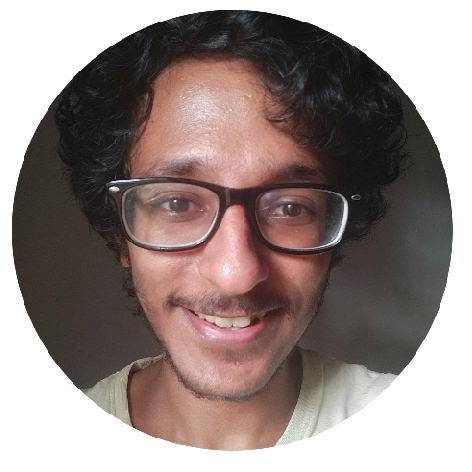
Arjun Ramachandran is a visual communication student and photographer, with interests in cinema and literature.
Published on October 31, 2017
Share
Related Articles
An Enigma Held in High Disregard, or KRISHNA REDDY
Krishna Reddy’s engagements and activism during his youth was informed by a compulsion to overturn the established order. The Indian struggle for independence was gaining momentum during this period, with Mahatma Gandhi calling for the complete end to British rule in India – and Reddy joined the protests. Following Reddy’s involvement with the Quit India Movement, for which he printed hundreds of posters and was jailed a couple of times, he moved to Santiniketan – where, under the tutelage of Nandalal Bose, Benode Behari Mukherjee, and Ramkinkar Baij, he studied sculpture and water colour.
Representations of an Ethos: Razak Kottakkal
Razak Kottakal’s photographs of Basheer is almost as famous as Basheer himself; anybody who is familiar to a minimum extent with Modern Malayalam literature would have encountered at least a few of Razak’s portraits of literary figures, without knowing the name of the photographer – mostly because the photographer is considered secondary to the subject in such cases. Different aspects of Razak’s life have entered public record, through interviews of his contemporaries, family, colleagues, and subjects. Yet, for all the wealth of information that such records provide, they are hard reminders that photographers are barely understood beyond superficial labels.
Living Pictures – the “Mani Bust”
In 1930,PRS Mani Iyer became the first official photographer of Ramana. His portrait of Ramana, commonly known as “Mani Bust”, became the most popular photo, widely circulated and worshiped by millions from across the world. Very little is known about this master photographer and his other photographs that he had taken while he was working as an Executive photographer at Modern Theaters, Salem.
MuchiRi (MusiRi) in Ancient Tamil Texts and Tamil Tradition
In the Early Historic (Sangam Age) Tamil country (comprising modern Tamil Nadu and Kerala), numerous developments, including the composition of Tamil texts and the emergence of port towns along the coast . The Early Historic period is placed between third century BCE and third century CE. MuchiRi or MusiRi was an Early Historic port town on the Kerala coast of India, and the town was under the control of the Chera vEntars (a political power) .
Project 365 tri-sangam ports Tyndis, Muziris and Korkai
Such a photographic mapping, done with the awareness of our history and culture, would be valuable in many ways including its political and cultural aspects of our contemporaneity. The concept of EtP, ancient India in contemporary times, is counter posing our past and present in a new perspective. The blend of history and art is not in vogue in our ego driven market world of art and culture. It is in this situation that the project marks its significance in the photographic history of South Asia.


